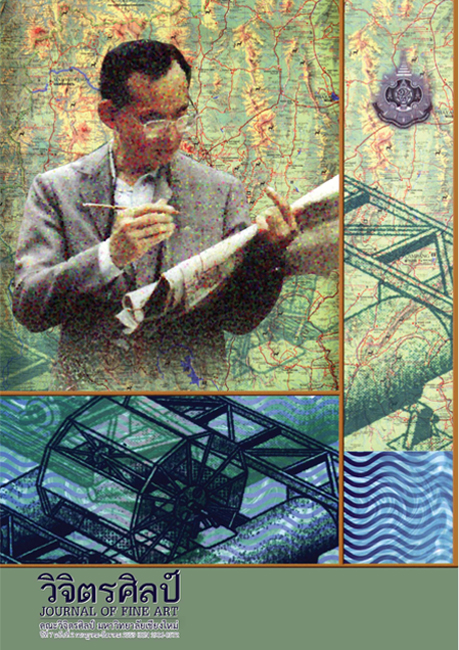การวิเคราะห์อายุพระพุทธรูปล้านนาจากจารึก และการตรวจสอบทางประวัติศาสตร์ศิลปะ
Main Article Content
Abstract
จากการศึกษาพระพุทธรูปล้านนาที่มีจารึกพบว่าสามารถแบ่งออกตามลักษณะการจารึกเบื้องต้นได้เป็น 2 กลุ่มคือ กลุ่มจารึกระบุศักราช และกลุ่มจารึกไม่ระบุศักราช ในการศึกษาจึงได้นำกลุ่มจารึกมีศักราชเป็นหลักเกณฑ์ในการกำหนดอายุ ซึ่งสามารถแบ่งกลุ่มรูปแบบศิลปกรรมและแบบแผนของจารึกที่พบบนฐานพระพุทธรูปมาเป็นต้นแบบเพื่อใช้ในการวิเคราะห์กลุ่มจารึกไม่ระบุศักราช และกลุ่มที่จารึกลบเลือน โดยใช้วิธีการวิเคราะห์ร่วมกันของวิธีการทางด้านจารึก และทางด้านประวัติศาสตร์ศิลปะในการศึกษาดังกล่าวได้นำวิธีการคำนวณปีศก และปีนักษัตร โดยส่วนใหญ่นิยมใช้ในการคำนวณเพื่อตรวจสอบความถูกต้องของเวลาที่บันทึกลงในจารึก และเอกสารโบราณ ซึ่งในการศึกษานี้ได้ดัดแปลงมาใช้ในการคำนวณเพื่อหาปีศักราช โดยการใช้ปีศก และปีนักษัตรจากจารึกบนฐานพระพุทธรูปจากการศึกษาพบว่า สามารถนำวิธีการคำนวณจากปีศก และปีนักษัตร เพื่อหาปีศักราชได้ ซึ่งจะได้ผลของปีศักราชอย่างกว้าง โดยเมื่อได้ช่วงเวลาอย่างคร่าวๆ แล้ว จึงนำมาวิเคราะห์ร่วมกับการกำหนดอายุจากรูปแบบศิลปะ ซึ่งผลของการวิเคราะห์ร่วมกันนั้นมีความสอดคล้องกันอย่างดี ดังนั้นจึงสรุปได้ว่าแนวทางการวิเคราะห์โดยวิธีการทางด้านจารึก และทางด้านประวัติศาสตร์ศิลปะเป็นทางหนึ่งที่จะช่วยสนับสนุนการกำหนดอายุให้ชัดเจนยิ่งขึ้น และสามารถนำแนวทางการวิเคราะห์ดังกล่าวไปใช้ในกากำหนดอายุศิลปวัตถุอื่นๆ ได้
The analysis of Lan Na Buddha Ima ge with Inscriptio n and Art History
The Lan Na Buddha images with inscriptions on their bases can be categorized into 2 groups, namely those bearing the information on an exact casting year and those without it. As for the first group, the images can be clearly dated and easily categorized. The formats of inscriptions found in this group were also studied by the researcher in order to find the development. Then, employing the study methods of inscription and art history, the researcher compared the first group with the second one and the other having unclear inscriptions. It is found that though not inscribed with an exact casting year, the inscriptions of the second group always bear the information of eras or astrology years, which helps us in estimating the period when those statues were made. The result of studying inscriptions was cross-checked with the study of art styles. The researcher discovered that these two methods can be used together well and thought that they can be applied in studying and dating other artifacts


